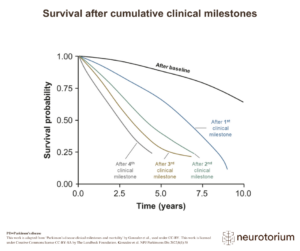Index for
slide deck
Title

Hypothetical model for the pathological–clinical continuum of Alzheimer’s disease
!--?xml version="1.0" encoding="UTF-8" standalone="yes"?-- The slide represents a hypothetical model for the pathological-clinical continuum of AD.[Sperling et al., 2011] The ‘preclinical’ stage precedes mild cognitive impairment (MCI) and includes individuals who have ev…
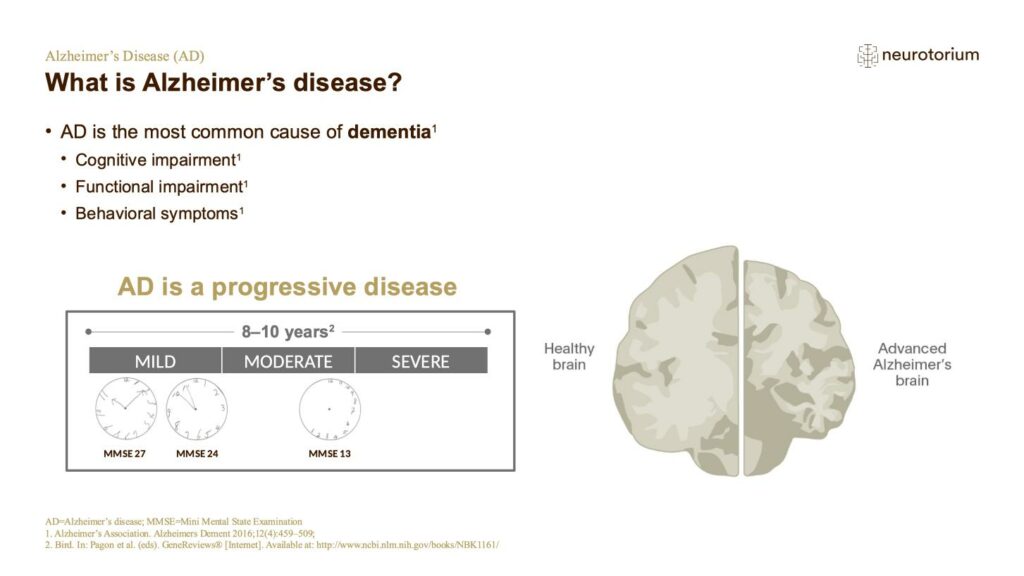
What is Alzheimer’s disease?
!--?xml version="1.0" encoding="UTF-8" standalone="yes"?-- Alzheimer’s disease (AD) is the most common cause of dementia, accounting for approximately 60–80% of all dementia cases.[Alzheimer’s Association, 2016] AD is a degenerative and progressive disorder, associated wi…

Accumulation of Alzheimer’s disease risk factors over time
!--?xml version="1.0" encoding="UTF-8" standalone="yes"?-- The risk factors and protective factors for the development of AD/dementia accumulate over a lifetime, as shown in this slide.[Jiang et al., 2013; Bendlin et al., 2010; Winblad et al., 2016] Many risk and protecti…
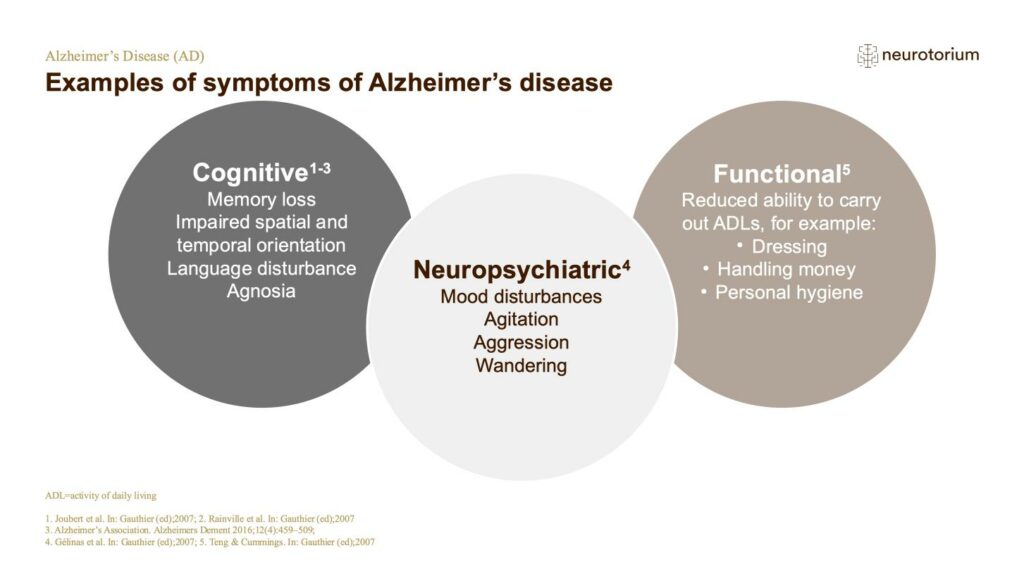
Examples of symptoms of Alzheimer’s disease
!--?xml version="1.0" encoding="UTF-8" standalone="yes"?-- In general, the symptoms of AD can be divided into three categories – cognitive, functional, and neuropsychiatric. Cognitive symptoms – the main areas of cognition that can be impaired over the course of AD includ…

Projected increase in the prevalence of Alzheimer’s disease
!--?xml version="1.0" encoding="UTF-8" standalone="yes"?-- Worldwide, in 2015, an estimated 46.8 million people were living with dementia.[WHO, 2015] In the US, in 2016, an estimated 5.2 million people >65 years of age were affected by AD.[Hebert et al., 2013] Age is one …
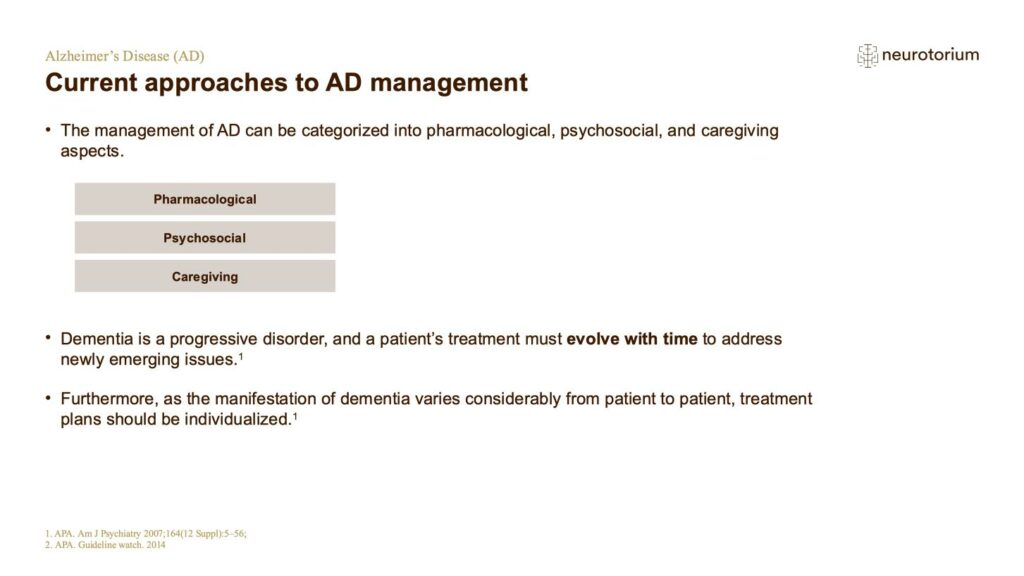
Current approaches to AD management
!--?xml version="1.0" encoding="UTF-8" standalone="yes"?-- Full reference details: American Psychiatric Association; Rabins PV, Rovner BW, Rummans T, et al. Guideline watch for the practice guideline for the treatment of patients with Alzheimer’s disease and other dementi…
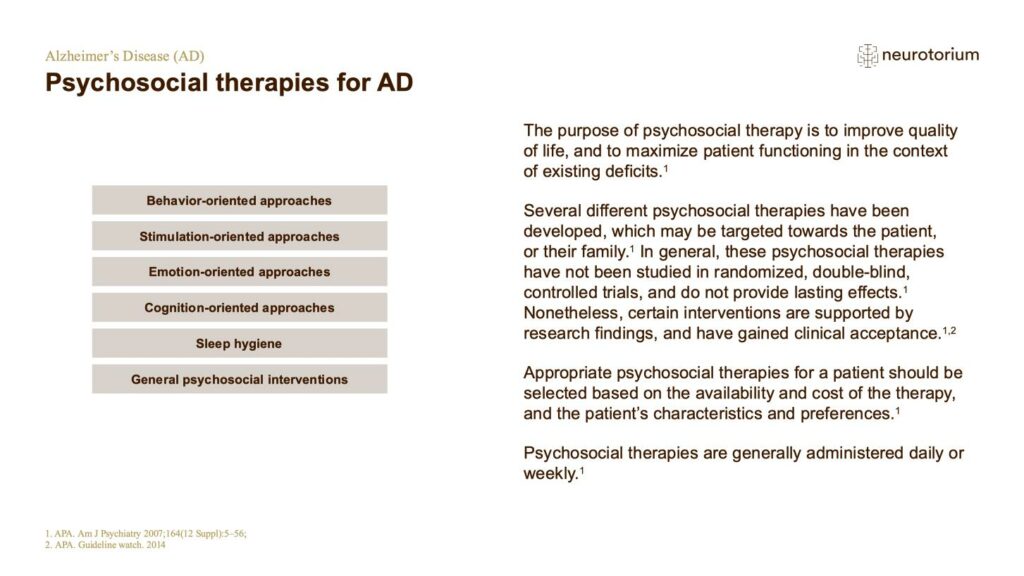
Psychosocial therapies for AD
!--?xml version="1.0" encoding="UTF-8" standalone="yes"?-- Full reference details: American Psychiatric Association; Rabins PV, Rovner BW, Rummans T, et al. Guideline watch for the practice guideline for the treatment of patients with Alzheimer’s disease and other dementi…



